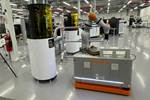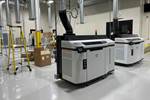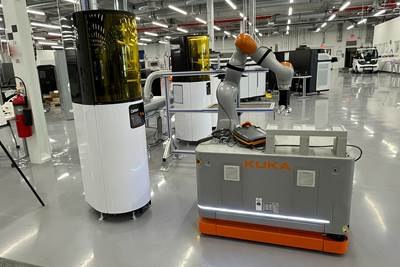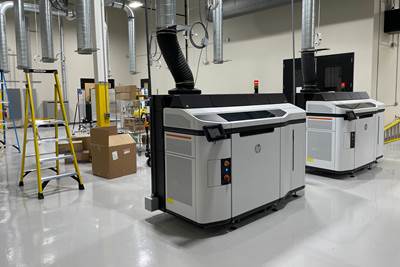Why Today’s ROI Is the Wrong Measure: Seeing Additive Manufacturing for the Transformation It Brings
Today’s ROI is based on assumptions and limitations that will change. Here are examples of companies getting ready for tomorrow.
Something new is happening, the beginning of the next phase. I got my first clue to this in a comment from Sean Hilbert, CEO of motorcycle maker Cobra Moto. He described the error companies make in evaluating additive manufacturing. “We cost it wrong,” he says. His company relies on AM so it doesn’t have to wait for molds. Therefore, additive for him is not just about production; it is about production plus the capability to launch or pivot production quickly as new opportunities demand.
More recently, I spent time with Eaton’s Aerospace Group, a much different organization making much different parts. And yet here as well, the need to cost differently accounts for the advance the company is now making. Eaton is taking on some of the qualification cost of converting customer parts to AM because of the value Eaton stands to win from this change.
“You cannot look at additive in terms of today’s ROI,” says Mike York, Eaton’s AM director for aerospace. “You have to see additive for the transformation it brings.”
This is the shift. For more and more companies, the focus is not on getting ready for production with additive; they are ready now — in the sense that they have already decided AM represents an important share of the future of their production. Instead, focus now is on what comes next: preparing for the transformation, getting ready to scale up with additive and to proceed at a large scale with the possibilities it brings.
The point about ROI can’t be lost. An AM machine, a production 3D printer of whatever type, is not a molding press or machine tool. To not see this is to hobble AM — plugging it into a role that conventional processes already perform and watching the effect on part cost. The problem is this: That ROI expectation is based on a set of assumptions about how manufacturing proceeds, and those assumptions have an expiration date. Cobra Moto thus views AM as part of overhead not production, because this is the way to value its readiness to launch new products quickly. And Eaton views AM as the mode of production for the aircraft designs that largely have not arrived yet, so it aims to master and qualify the capability today. This is the new phase, what manufacturers are increasingly seeing: not whether to commit to additive, but how to understand the commitment. Additive will not win according to the calculus of production today, but it is the capability that is going to be used on the other side of the transformation (or transformations) that break through the boundaries that define today’s calculus.

Ford has realized unattended production via additive manufacturing using an autonomous collaborative robot. Photo courtesy Ford Motor Company.
Ford and GKN also see this transformation coming — or teams of people within these companies see it. Those teams are working on how to get ready. Just as Eaton’s investment is qualification, for Ford, it is found in developing automation for additive. And for GKN, the investment is in pursuing a system-wide preparedness for short-lead-time additive production.
I said that teams of people see it. That point is significant. These teams work in large, successful organizations, and not everyone sees what’s ahead the same way. Indeed, not everyone wants to see it; we all want the way we know to be the way that defines the future, and those winning at ROI today have an interest in questioning or doubting the transformation. They deserve to be heard; they are winning today’s profits. But again, vitally: Today’s ROI is based on assumptions with an expiration date. How long until that date is unclear, and it differs for different producers. The transformation — not just pursuing and preparing for it, but also remaining true to the effort to do so — is the promise and the challenge facing companies advancing with additive today.
Related Content
At General Atomics, Do Unmanned Aerial Systems Reveal the Future of Aircraft Manufacturing?
The maker of the Predator and SkyGuardian remote aircraft can implement additive manufacturing more rapidly and widely than the makers of other types of planes. The role of 3D printing in current and future UAS components hints at how far AM can go to save cost and time in aircraft production and design.
Read MoreDMG MORI: Build Plate “Pucks” Cut Postprocessing Time by 80%
For spinal implants and other small 3D printed parts made through laser powder bed fusion, separate clampable units resting within the build plate provide for easy transfer to a CNC lathe.
Read MoreThis Drone Bird with 3D Printed Parts Mimics a Peregrine Falcon: The Cool Parts Show #66
The Drone Bird Company has developed aircraft that mimic birds of prey to scare off problem birds. The drones feature 3D printed fuselages made by Parts on Demand from ALM materials.
Read MoreVideo: 5" Diameter Navy Artillery Rounds Made Through Robot Directed Energy Deposition (DED) Instead of Forging
Big Metal Additive conceives additive manufacturing production factory making hundreds of Navy projectile housings per day.
Read MoreRead Next
Autonomous Cobot Automation Increases Production 3D Printer Output for Ford (Includes Video)
A mobile robot that travels to each Carbon machine to unload builds lets the automaker run an additional three to four builds per machine per day. Autonomous robots fit well with 3D printing, but their role in production will extend beyond just the additive machines.
Read MoreWhat Does Additive Manufacturing Readiness Look Like?
The promise of distributed manufacturing is alluring, but to get there AM first needs to master scale production. GKN Additive’s Michigan facility illustrates what the journey might look like.
Read MoreQualification Today, Better Aircraft Tomorrow — Eaton’s Additive Manufacturing Strategy
The case for additive has been made, Eaton says. Now, the company is taking on qualification costs so it can convert aircraft parts made through casting to AM. The investment today will speed qualification of the 3D printed parts of the future, allowing design engineers to fully explore additive’s freedoms.
Read More





















